Grebes, as a group, are known for eating feathers – usually their own. The obvious question is – why? There would be virtually no nutritional value in a feather.
Clark’s Grebe eating a feather
I’ve photographed four species of grebes – Western Grebe, Clarks Grebe (these two are very similar), Pied-billed Grebe and Eared Grebe. I’ve been able to document feather eating in all but the Eared Grebe.
Western Grebe parent feeding feather to young
Over a period of perhaps a half hour I watched this adult feed several feathers to the chicks, who seemed almost as eager to consume the feathers as they did the fish provided by the parents.
Western Grebe chick reaching for a feather from its parent
Feathers are fed to the young almost immediately after hatching. In fact, feathers are very often the first item eaten by newly hatched chicks of many grebe species.
The purpose(s) of feather eating is unproven but evidence suggests that the behavior has these benefits for the birds.
- Some of the ingested feathers form a plug in the pylorus, between the stomach and small intestine, which acts as a strainer to keep fish bones in the stomach long enough to be completely digested.
- Most swallowed feathers end up in the stomach lumen, mixed with food. They eventually (along with any indigestible matter) form pellets that are ejected through the mouth. The continuous passage of these pellets through the upper digestive system minimizes the buildup of a variety of parasites that are very common there and plague grebes.
Pied-billed Grebe eating a feather
Most of the feathers grebes eat are their own, pulled out during preening. However, if there are many grebes on a pond, lots of these feathers end up floating on the water. When a grebe sees one of them it will very often eat it, whether or not it’s from that bird or another. In my experience, whenever a grebe notices one of these feathers slowly floating by it invariably plucks it out of the water and gobbles it down.
Virtually all of the feathers are small, soft, contour feathers from their flanks – not the larger quill feathers. Grebes continually molt these flank feathers, probably as an adaptation that provides a constant supply of feathers for pellet formation.
Pied-billed Grebe about to consume a feather
In post-mortem exam, feathers may form as much as 52.5% of total stomach contents in Pied-billed Grebes, so obviously feather ingestion plays a significant role in the normal functioning of the digestive tracts of grebes.
Ron
Source: The Birds of North America, Online (pay site)


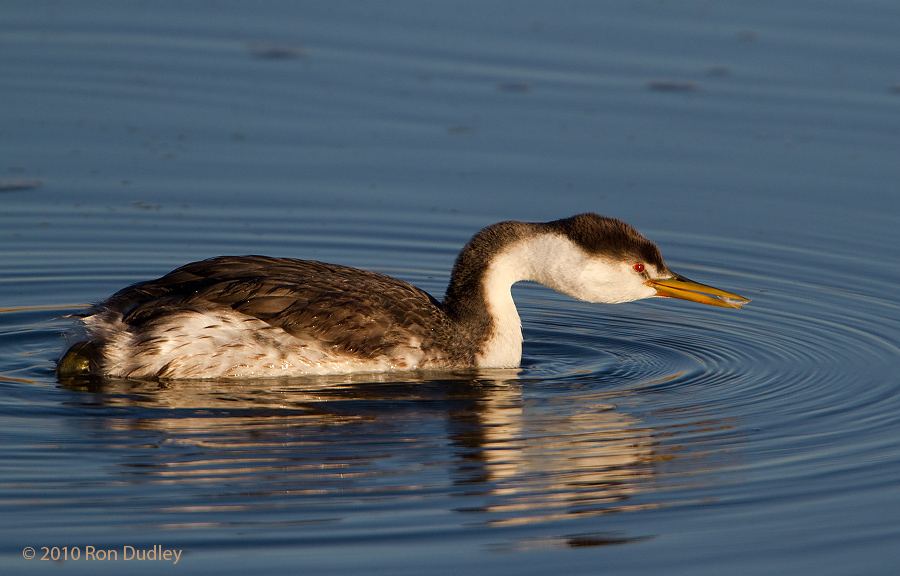
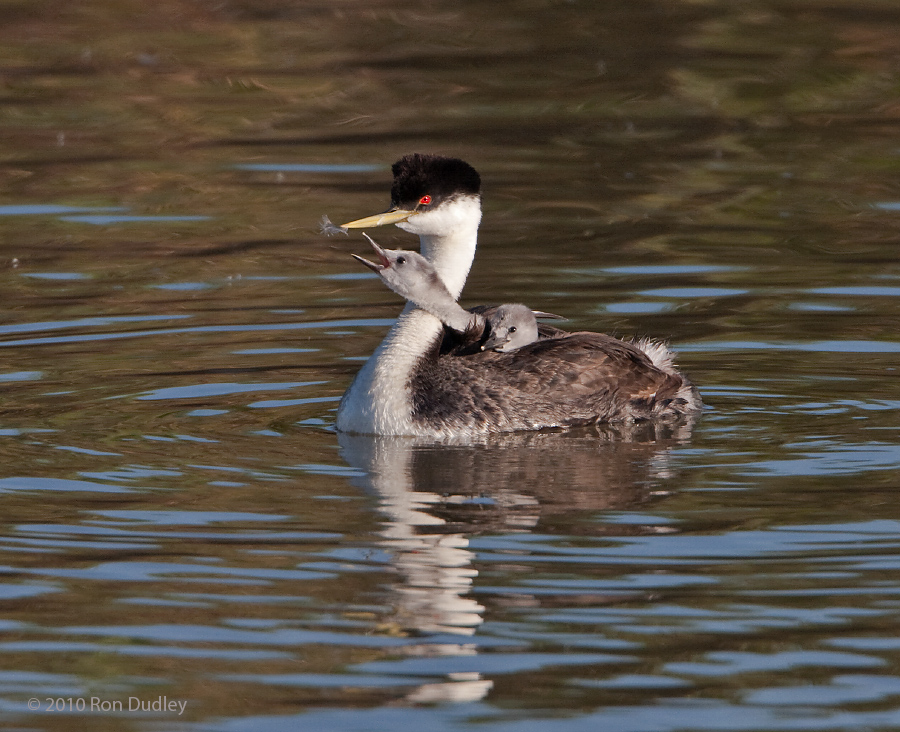
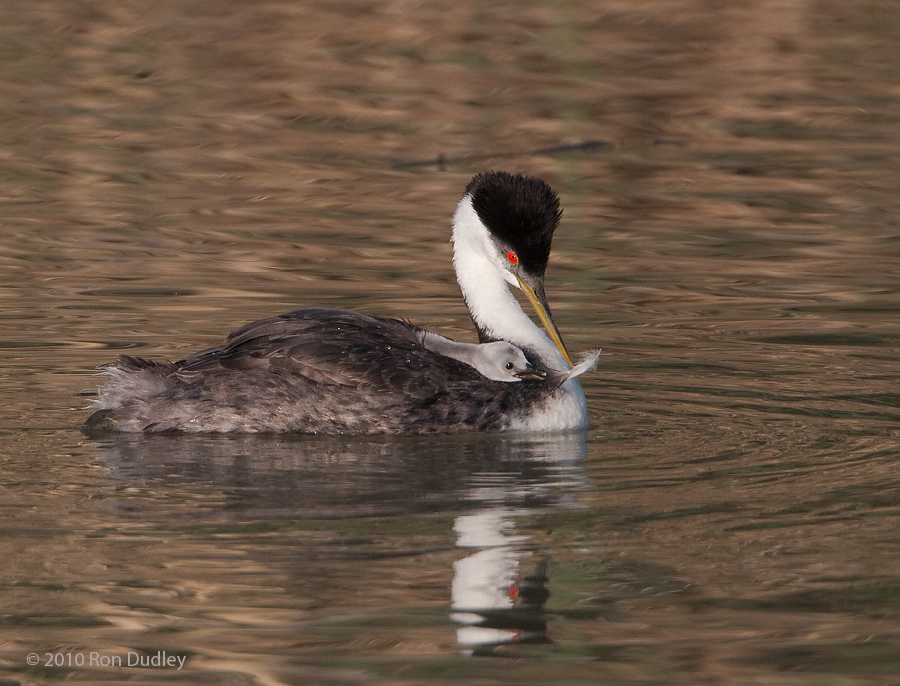
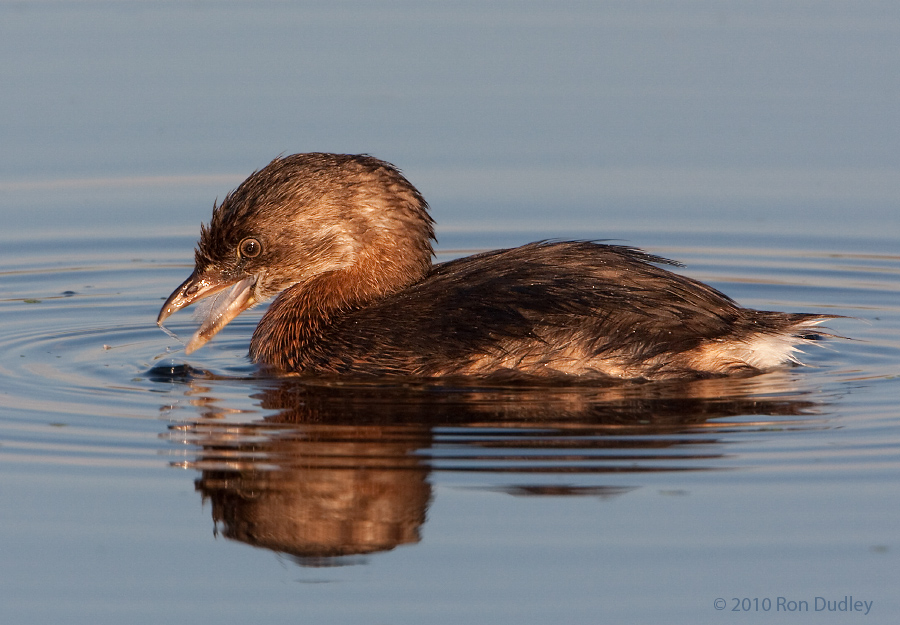
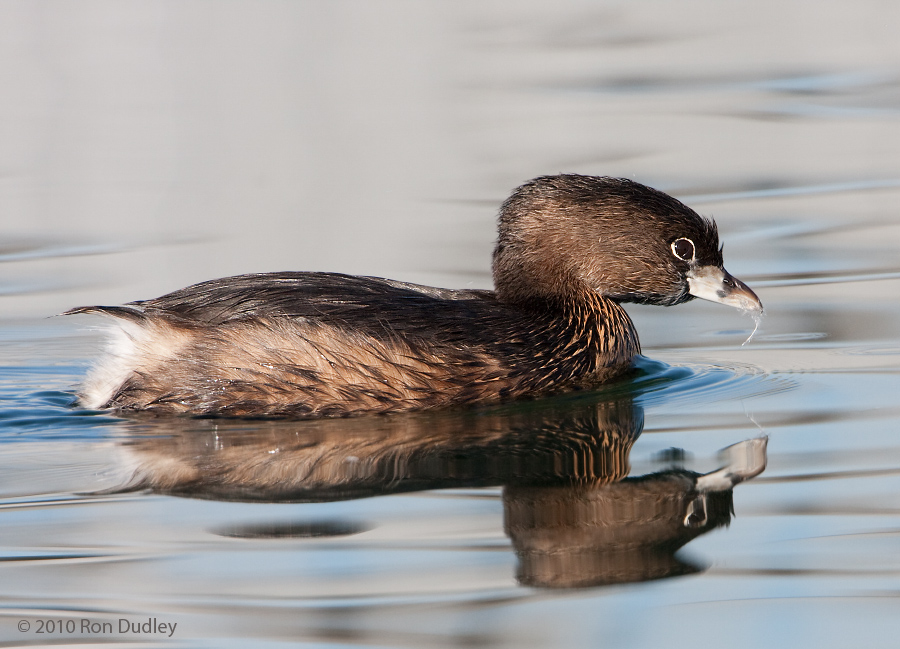
Hello,
Thank you so much for this article! I just necropsied a Western Grebe and was completely dumbfounded at the volume of bile colored feathers retrieved from the gizzard.The whole cavity was compacted and rock hard. At first i thought for sure that must have been pathological.There were no feathers in the lumen of the gut anywhere and there were no ingesta either. I thought it was an obstruction. I have some images that I can provide ( poor quality and too graphic for publishing, but in case you were interested. Anyways, thanks again!
Fascinating info on the necropsy, Linda. Thank you. I’ve read that those masses were very hard and compacted. Better to scour out some of the digestive tract of parasites from what I’ve read.
Hi . Very nice to find this info . I was photographing and videoing Pied billed grebes this afternoon and witnessed the adult picking flank feathers out and the chicks ( 4 ) eagerly gulping them down . Thank you from Jeff
Another informative and very enjoyable article Ron. The photos aren’t bad either-the water colors are wonderfully rendered.